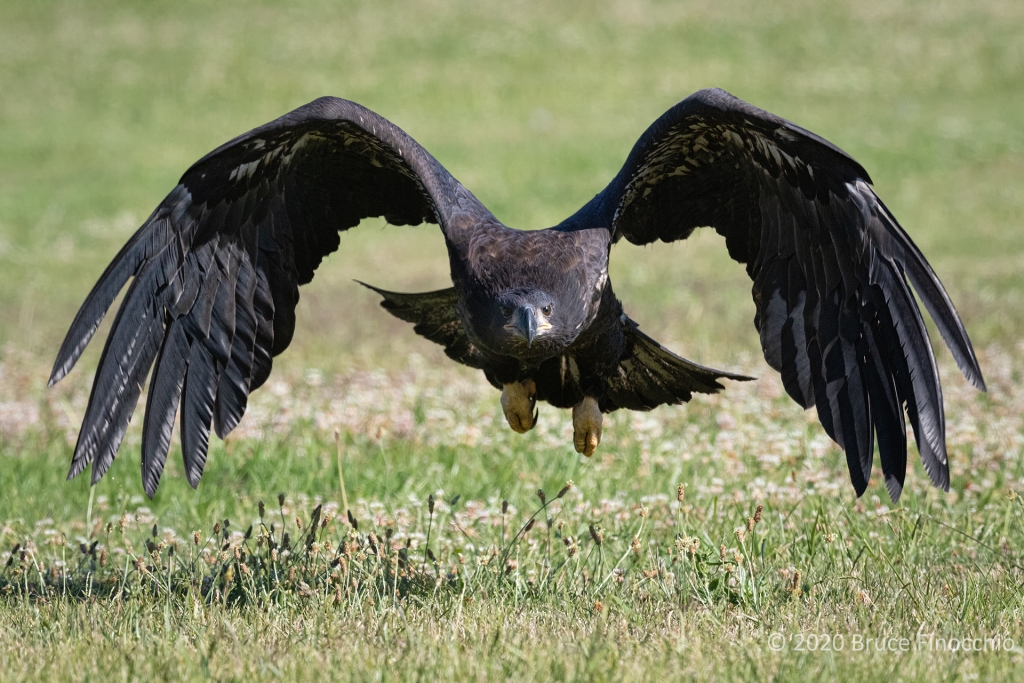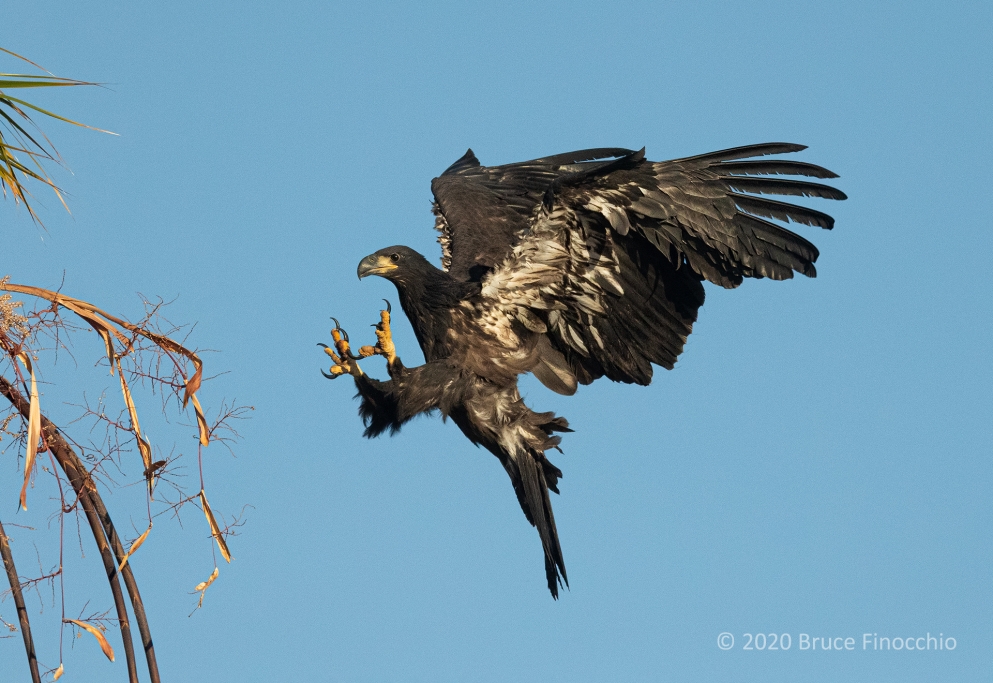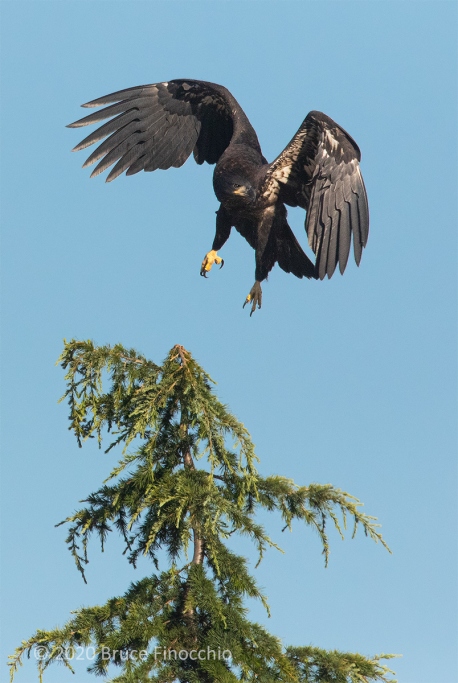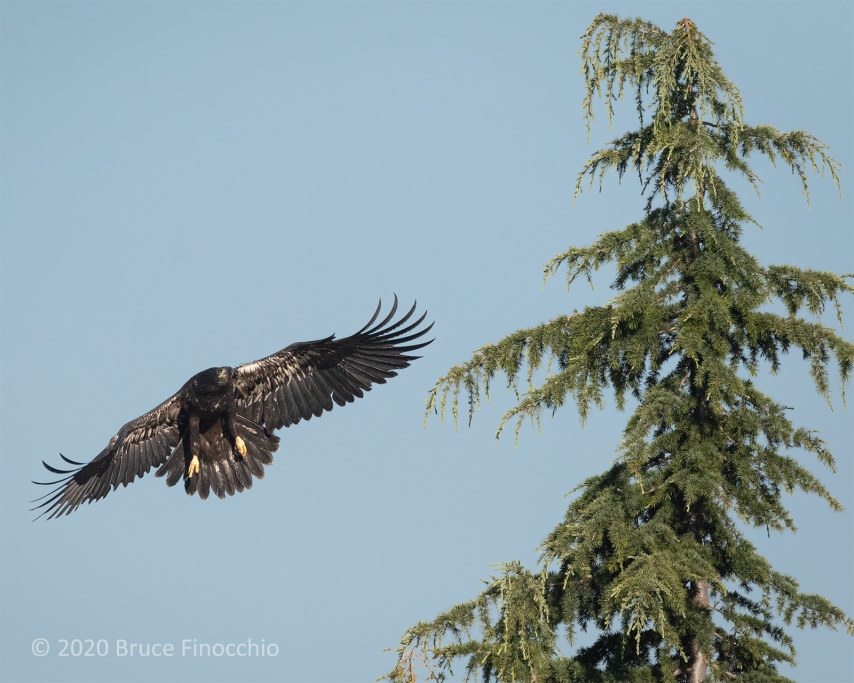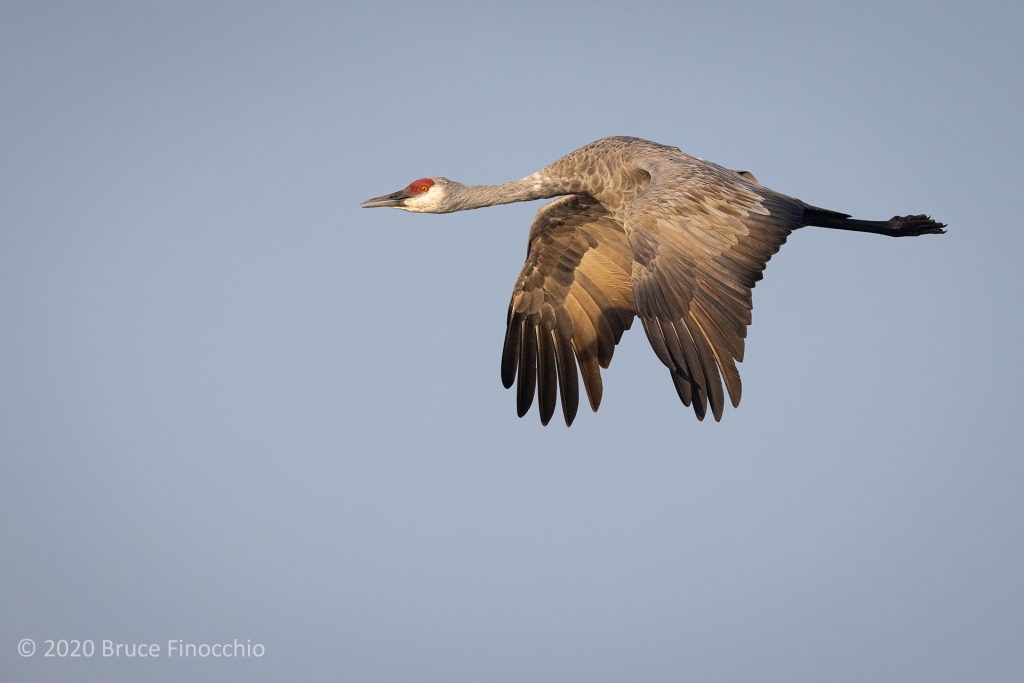During a fall early morning, in my blind, I caught some movement at the corner of the blind. I took a peek, and this Bobcat was staring at me. I lean back and reach for my 100—500 mm Canon Lens. Knowing he was too close for my 600 mm f4.0 telephoto lens, which I was using to capture small birds. I was slow and deliberate. I knew that quick movement would scare him off. With the camera ready, I slowly move him into view around the corner of the blind window. He was looking at me, about twenty feet away. I took a few safety shots with the corner of the blind in the frame. I waited for his next move. He walked toward the pond, and I got a couple of images of him in the vegetation before he reached the pond, with some black sage in the foreground. Then, he continued walking across in front of me, in front of the pond. For both images, I zoomed the lens open and down to 100 to 200 mm to include all of him in the frame.
Intentionally, I sit in the very back part of the blind, so my 600 mm lens doesn’t stick out of the blind window. So when I move the lens, the movement isn’t seen. Movement renders me visible, causing and activating the danger signal for the birds and the Bobcat.
At the edge of the pond, he stopped and stared at me. It seemed like minutes; I zoomed in tight for a face portrait and took many shots, as usual. Then he walked away from me toward the brush line. Stopping again halfway there, looking back at me, more face portraits. Then, unconcerned, he walked toward the brush again and stopped to look down the field toward my cabin. Here, I switch to my 600 mm lens and capture the excellent side profile where you can see the transparent cornea of his eye. The dried chamise blossoms of the brush line created the beautiful purplish bokeh.While the Bobcat was walking away, I saw it was a male. That’s why I have been referring to him.
Maybe five minutes at most. However, this is one of my most incredible wildlife encounters with a wild animal. These five minutes will live with me for the rest of my life. I am humbled and grateful to this Bobcat for allowing me to experience his wildness and spirit in a completely natural, fearless way—for accepting me into his world!
A short time ago, I observed many images of a very young bobcat taken at a game farm by a photographer friend. Observing them, they felt like a house cat playing with a feathered lure, which is what they were using, and the bobcat kitten was playing like a house cat.As a comparison, I remarked to a client’s comment about my images, with this, “Yes, it was a spiritual experience. The way he moved and muscles worked, the looks he gave me, to be so close, to watch him be so aware. There was a particular and extraordinary wildness about him I will never forget.”
ABOUT:
The Bobcat, also known as the red lynx, is a medium-sized cat native to North America. It ranges from southern Canada through most of the contiguous United States to Oaxaca in Mexico. They listed it as Least Concern on the IUCN Red List since 2002 because of its wide distribution and large population.
A long-legged cat with large paws, a relatively short body, and tufted ears, the Bobcat is 60–100 cm (24–40 inches) long, excluding the 10–20-cm tail, stands 50–60 cm at the shoulder, and weighs 7–15 kg (15–33 pounds). Its fur, stiffer and less valuable than the lynx, is pale brown to reddish with black spots. The underparts are white; the tip of the tail is black above and white below.
“Wild animals never kill for sport. Man is the only one to whom the torture and death of his fellow creatures is amusing in itself.” ~ James Anthony Froude“The difference between humans and wild animals is that humans pray before they commit murder.” ~ Friedrich Durrenmatt













